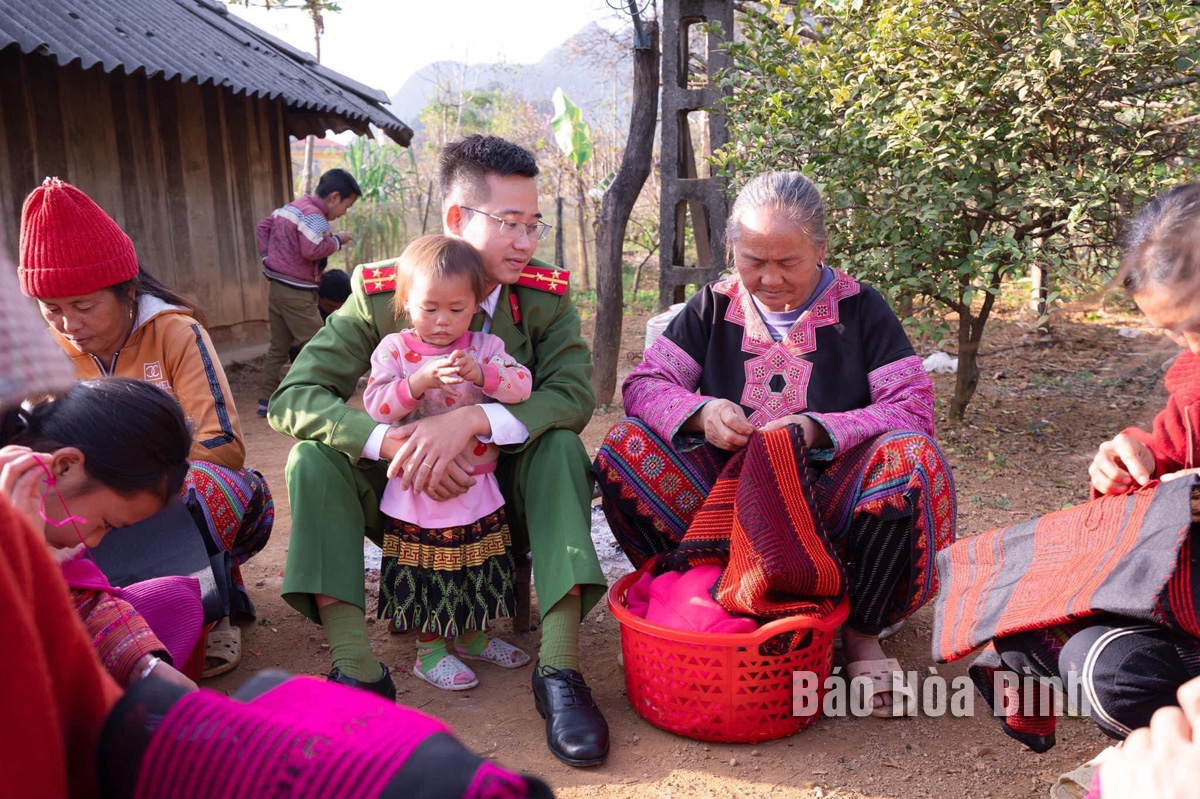(HBO) - Unlike other ethnic minorities in the area, despite the blending of various cultures and modern lifestyles, Mong women in Hang Kia commune, Mai Chau district, still maintain their unique traditional cultural charm, especially in the art of embroidery and tailoring for themselves and their family members.
Mong women in Hang Kia village, Hang Kia commune, Mai Chau district, often engage in embroidery during their free time, contributing to the preservation of the traditional cultural trait.
It is easy to notice the sight of local Mong women wearing traditional clothing in their daily activities. Elderly women, young women, and girls sit by the roadside or stream, meticulously working with needle and thread to make traditional clothing. Creating such an outfit can take several months, even a year. The art of embroidery has been passed down through generations among the women. When they encounter a stitch they are not familiar with, they seek guidance from experts (their mothers or grandmothers) to ensure that the embroidery remains flawless.
Villager Mua Y Lien said she learned to embroider at the age of 10 from her mother and her observation of the older women embroidering. "Embroidery requires skill and precision because a single mistake means undoing everything and starting from scratch. Now that I have a family and a daughter, I have taught her as well because embroidery embodies the skill, patience, and dedication of Mong women."
Currently, the commune has 727 households with nearly 4,000 residents, 98% of them Mong ethnic people. Despite facing various challenges and relying mainly on agriculture and forestry for their livelihoods, the community has a rich and diverse cultural and spiritual life. During leisure time or on special occasions, such as festivals and holidays, local women gather in groups to embroider traditional patterns on clothing, with the hope of preserving their unique cultural heritage.
Thung Mai villager Giang Y Dua said she was taught embroidery, sewing, and stitching by her mother when she was eight years old, and by the time she got married, she had embroidered 10 sets of clothing. "Now, my 10-year-old daughter is also learning to embroider, as I want to preserve our cultural identity and prevent it from being lost."
However, over the time, with the development of society, the practice of embroidery and wearing traditional clothing has gradually declined. To ensure that the cultural beauty of the Mong people doesn't fade in the face of modern life, over recent years, the local party committee, government, various departments, and community organisations in Hang Kia have boosted the preservation and promotion of the ethnic cultural identity by encourage people to pass down the skills to the younger generations and wear traditional ethnic clothing on special occasions, festivals, and holidays.
Secretary of the Hang Kia commune’s Party Committee Vang A Vau said he hopes that this traditional craft will continue to thrive and becomes a distinctive product that attracts tourists to the area.
With the commune’s current potential for tourism development, Mong people’s traditional embroidery craft has an opportunity to expand beyond the scope of the family and become a marketable product. This not only helps preserve the cultural identity of the ethnic group but also provides employment and increases income for the local residents.



